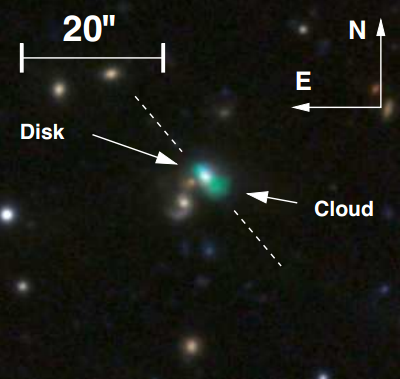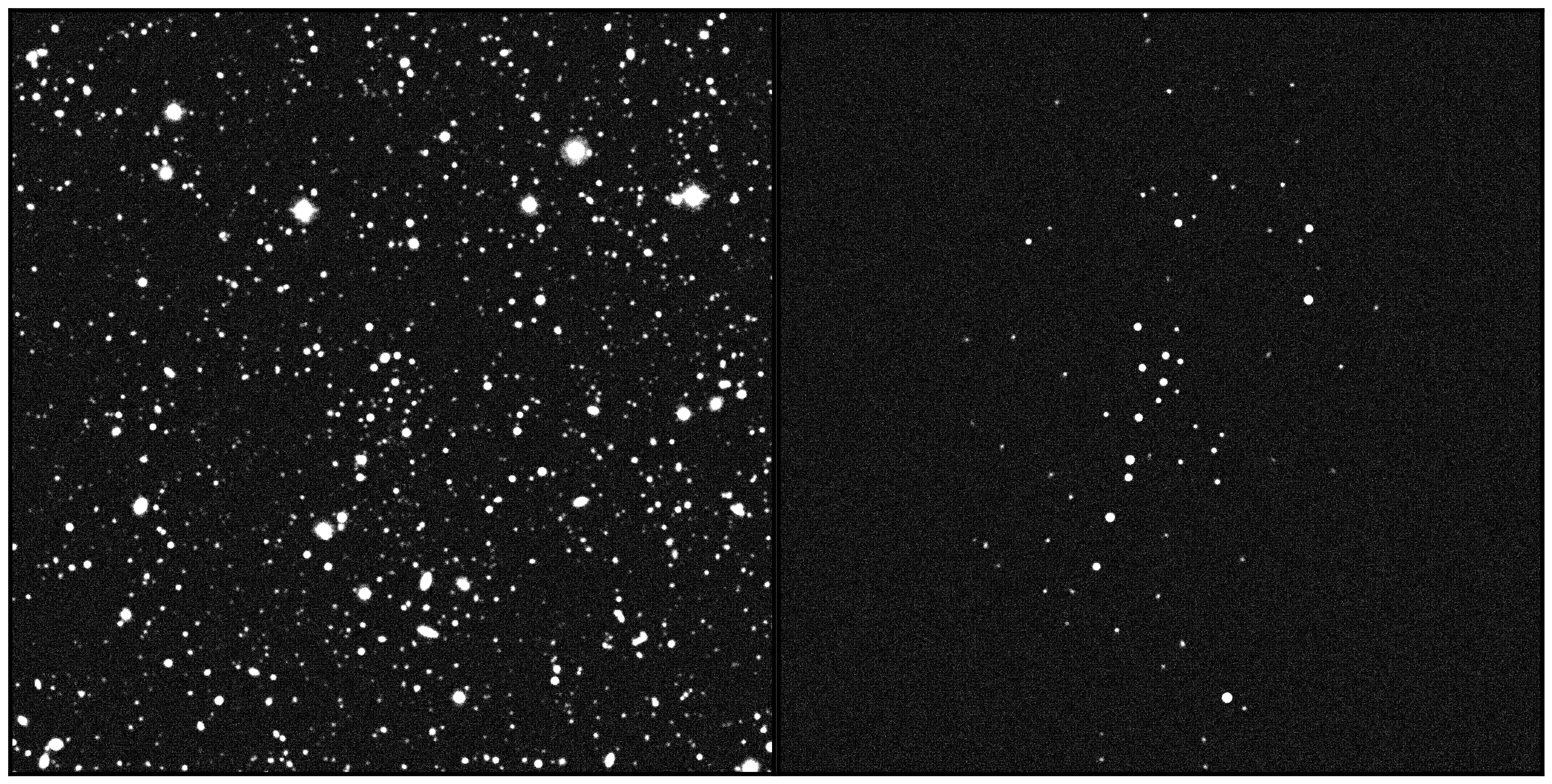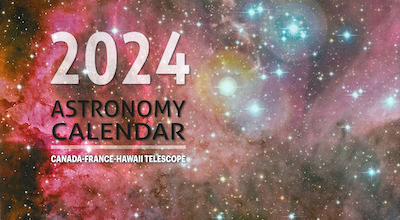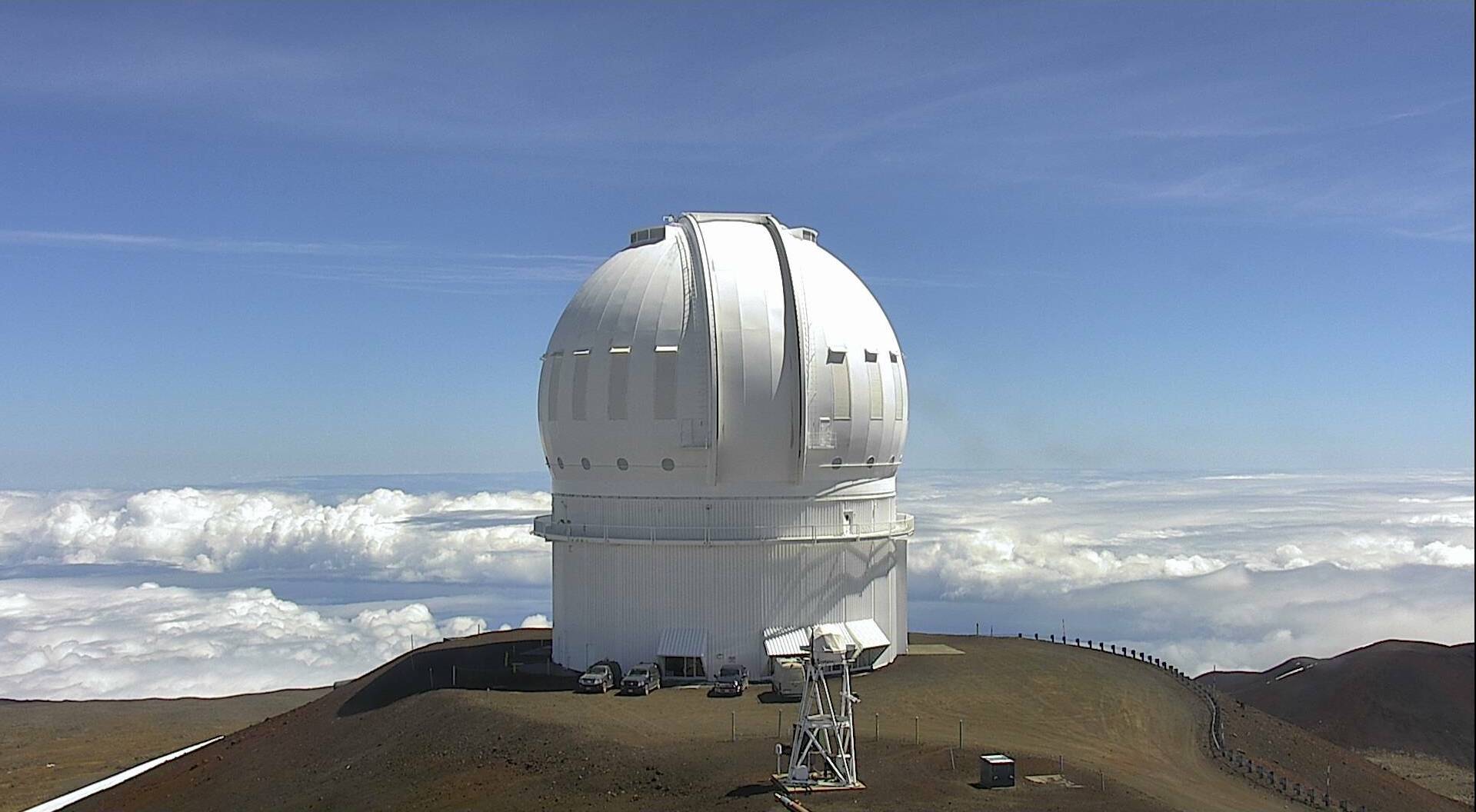Galaxy-wide Echoes from the past.
An international team of Astronomers discovered a strange object using MegaCam on the Canada-France-Hawaii Telescope and identified it as a new class of Galaxy using ESO's Very Large Telescope and Gemini South. Nicknamed “green bean galaxies” because of their unusual appearance, these galaxies glow in the intense light emitted from the surroundings of monster black holes and are amongst the rarest objects in the Universe.
Astronomer Mischa Schirmer of the Gemini Observatory had looked at many images of the distant Universe, searching for clusters of galaxies, but when he came across an object in an image from MegaCam on the the Canada-France-Hawaii Telescope, he was stunned — it looked like a galaxy, but it was bright green. The properties of this object are unlike any galaxy ever seen before, something totally unexpected. Schirmer quickly applied and got time to use ESO’s Very Large Telescope to find out what was creating the unusual green glow[1].
The new object, labeled J224024.1−092748 or J2240, lies in the constellation of Aquarius (The Water Bearer) and its light has taken about 3.7 billion years to reach Earth. After the discovery, Schirmer’s team searched through a list of nearly a billion other galaxies[2] and found 16 more with similar properties, which were confirmed by observations made at the Gemini South telescope. These galaxies are so rare that there is on average only one in a cube about 1.3 billion light-years across. This new class of galaxies has been nicknamed green bean galaxies because of their color and because they are superficially similar to, but larger than, green pea galaxies[3].
The team’s observations showed that in the case of J2240, and other green beans spotted since, it is truly huge, spanning the entire object. J2240 displays one of the biggest and brightest such regions ever found. Ionized oxygen glows bright green, which explains the strange color that originally caught Schirmer’s attention. The team’s further analysis of the data soon revealed another puzzle[4]. J2240 appeared to have a much less active black hole at its center than expected from the size and brightness of the glowing region. The team thinks that the glowing regions must be an echo from when the central black hole was much more active in the past, and that they will gradually dim as the remnants of radiation pass through them and out into space. These galaxies signal the presence of a fading galactic center, marking a very fleeting phase in a galaxy’s life. In the early Universe galaxies were much more active, growing massive black holes at their centers that swallowed up surrounding stars and gas and shining brilliantly, easily producing up to 100 times more light than all the stars in the galaxy together. Light echoes like that seen in J2240 allow astronomers to study the shutdown processes of these active objects to understand more about how, when, and why they halt — and why we now see so few of them in younger galaxies. This is what the team aims to do next, by following up on this research with further X-ray and spectroscopic observations.
Links
Notes
[1] The astronomers studied the object using the powerful X-shooter spectrograph on the VLT. By splitting the light up into its component colors they could find out the composition of the glowing material and why it was shining so brightly.[2] The search was made using the huge online database of the Sloan Digital Sky Survey (SDSS).
[3] Green Pea galaxies are small, luminous galaxies undergoing vigorous star formation. They were first spotted in 2007 by participants in the astronomical crowd-sourcing project Galaxy Zoo. Unlike green beans, these galaxies are very small — our Milky Way galaxy contains a mass equivalent to that of around 200 average green pea galaxies. The similarity between green pea and green bean galaxies is limited to their appearance, as most of them are not closely related.
[4] In many active galaxies the view of the central black hole is blocked by large amounts of dust, making it difficult to measure the activity of the black hole. To check whether green bean galaxies are indeed different from other galaxies with hidden centers, the astronomers looked at data from these galaxies at much longer infrared wavelengths that easily penetrate even very thick dust clouds. The central regions of J2240, and the other green bean galaxies, turned out to be much fainter than expected. This means that the active nucleus is now really much weaker than suggested by the brightness of the glowing regions.
Contacts
Mischa Schirmer
Science Fellow, Gemini Observatory
La Serena, Chile
Tel: +56 (51) 205600
Email: mschirme@gemini.edu
Richard Hook
ESO, La Silla, Paranal, E-ELT & Survey Telescopes Press Officer
Garching bei München, Germany
Tel: +49 89 3200 6655
Cell: +49 151 1537 3591
Email: rhook@eso.org
Daniel Devost
Canada-France-Hawaii Telescope
Kamuela, Hawaii , USA
Tel: +1 808 885 3163
Email: veillet@cfht.hawaii.edu
Peter Michaud
Gemini Observatory
Tel: +1 808 974 2510
Email: pmichaud@gemini.edu





